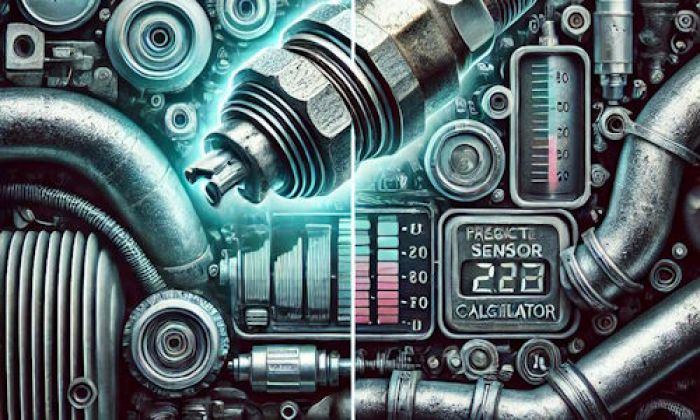Diesel vehicles were not popular a few decades ago. The diesel engine produced soot and other gases, all of which were frowned upon by clean environment aficionados. Over time, the engine manufacturers improved the way diesel engines perform and compete in today's very advanced technology space.
Service DEF system message highlights
- Common reasons:DEF injector issues, DEF quality problem
- How to fix:add DEF, read the codes
- Possible consequences:engine may lose power soon
- Priority level:High
- Can you drive?Yes
- DIY repair:Possible
- Repair price range:$20-$500

What is DEF?
The acronym DEF stands for Diesel Exhaust Fluid. Modern diesel engines are designed to use DEF. The fluid is meant to deal with the exhaust gases problem, which diesel vehicles have been blamed for a long time. The DEF system has also become a requirement in diesel vehicles to ensure the vehicles meet government emissions regulations.
The diesel exhaust fluid, marketed as AdBlue or AUS 32, is made up of water and a pure form of urea. The composition is 67.5% deionized water and 32.5% urea. It is designed to be consumed in a selective catalytic reduction (SCR) which is part of the DEF system.
The DEF system works in a similar fashion as EGR (exhaust gas recirculation) and DPF (diesel particulate filter). The DEF system uses the DEF fluid and is responsible for minimizing NOx - nitrous oxide. The fluid gets exhausted over time, and it requires replenishment.
How does the DEF system work?
The DEF system runs on the DEF fluid. In your diesel vehicle, the exhaust gases from the engine are first passed through a particulate filter. The filter captures all the soot and ash.
The exhaust gases passed through the particulate filter are then passed past a nozzle that sprays them with DEF. In the SCR, the mixture vaporizes to form ammonia and isocyanic acid. The isocyanic acid is further broken down into ammonia and carbon dioxide.
The ammonia synergizes with the metallic compounds in SCR, thus converting nitrogen monoxide and dioxide into nitrogen and water. As you may know, nitrogen is a major component of the safe air we breathe. The nitrogen and moisture from your diesel vehicle are harmless to the environment and people.
Many diesel engines use the SCR alongside EGR and DPF to reduce the emission of harmful exhaust gases. The EGR has been used for quite some time but has been observed to reduce car performance and fuel efficiency. The EGR system is quite complex compared to the DEF system, and diesel engine manufacturers opt to go with the DEF.
SCR system remains a challenge for some diesel engine makers; given its numerous benefits, we should see its wide adoption over time. Unlike the EGR system, where most car owners don't even know of its existence, the SCR requires topping up. Not refilling the SCR reservoir comes with a list of issues, including vehicle underperformance and the "Service DEF System" message.
What does "Service DEF System" mean and what causes it?
Any problem or tampering done on the SCR system will activate the vehicle's computer to produce an error code relating to the system, which then makes a warning light appear on your dashboard. Several error codes are associated with the DEF system.
There are instances when the Service DEF System message can appear alongside other warning lights and messages. You may also find the check engine light or the stop engine light showing on your dash. Neglecting to work on these warning messages and lights could lead to serious damage to your vehicle's engine. Here are the likely causes of the 'Service DEF System' message;
1) Diesel Exhaust Fluid is running low
If you are driving a modern diesel vehicle, warning lights and messages will pop up whenever the car runs low on DEF. To accurately know how much DEF you need, you should first establish the engine's efficiency.
A diesel engine consumes DEF at the rate of 2-3% relative to the fuel it consumes. For a 65-gallon fuel tank, you will need between 1.2 and 2 gallons of DEF. Though you may not need to refill DEF every time you fuel, it is essential to replenish it regularly. Fill up DEF before a long haul to avoid encountering problems along the way.
2) Contaminated DEF added
It is possible to add the wrong DEF either because it is substandard or because it has expired. Every DEF container sold has an expiry date indicated on it. Exposing DEF to extreme temperature, sunlight, and impurities before using it can cause the DEF system to send error codes. The dash warning lights shown include a solid or flashing check engine light, and the driver will notice a mild to a severe loss of engine power.
3) The engine idled for more than an hour
For the new emissions-compliant diesel vehicle, too much idling can be problematic for the DEF system. When idling is done for more than an hour or longer than the manufacturer's recommendation, soot builds up in the DPF, hence requiring more frequent regens. Long idle time causes the DEF to crystallize in the injectors, causing many issues. Observing proper idling for your machine or vehicle helps reduce maintenance costs and saves fuel.
4) Cold weather
This is a common problem that people living in cold climates encounter. DEF has a freezing temperature more or less like water. When the fluid freezes, engine operation becomes impossible. It is a difficult situation to find yourself in because you shouldn't add additives to the DEF as it will throw off its concentration. Additives can also damage SCR compounding your problems even further. The SCR systems are designed to provide the necessary heat to the DEF tank to solve the freezing issue.
How to clear the "Service DEF System" message?
There are several reasons why your vehicle can give you this message. The message can appear, and the car gets crippled to 5MPH for a specified distance indicated on the dash. This can be annoying, given that you might have the DEF in the vehicle, and the warning light remains even after refilling. Other times, the warning message will appear because of cold weather, and it refuses to go away even after the temperature rises.
It is important to know that the modern vehicle diesel engine has been designed to be dependent on the DEF technology. If the DEF tank runs dry, the engine will either switch to the limp mode or limit the number of times the engine can turn over. The engine will not start at some point, and this will undoubtedly leave you stranded.
Here are a few tricks to clear this message and be back on the road:
- Buy an OBD II scanner. Attach it to the car's diagnostic port and read the codes available. Remember to put the vehicle in the ON or accessory in the ignition.
- Read and note the displayed codes. Delete the highlighted code and start the vehicle. The warning message should be gone.
- If the warning message does not disappear after starting the vehicle, turn the engine ON and OFF five to six times. You can then clear the codes again.
- This is a first-aid remedy and should let you reach the dealer.
- The warning message may appear because you have added DEF in the fuel tank rather than the DEF tank. The SCR will automatically warn you of the error. You should not start or move the vehicle even for an inch. Drain all the DEF from the fuel tank and repeat the above process of deleting the error codes.
- In the case where crystallization has happened, you will need to remove the injector. If you are a DIY enthusiast, disconnecting the injector is easy. After removing, the injector, clean the white stuff on it and also from the exhaust system. Return the injector and erase the error codes, as explained earlier. If the codes don't go away, visit your local dealership for professional assistance.
- There are error codes that might lead you to the DPF. In such instances, you must conduct a vehicle service and replace all the necessary parts.
Conclusion
The DEF system is a bit complicated, but understanding its role will help you appreciate its importance. Maintaining regular service of the components, such as the DPF, and ensuring the DEF fluid never runs low or dry will help you avoid the 'service DEF system' message.
DEF is relatively inexpensive and is readily available in gas stations. A 2.5-gallon should go for around $20 or less. Keeping DEF in your car for future use is not advisable, as it can become unstable over time. Remember, the diesel engine is becoming more complex by the day, and you should pay keen attention to what your user manual says. The good thing is that clearing the service DEF system message is easy, and it should cost you a manageable amount of time and money to solve it.
About the authors
The CarAraC research team is composed of seasoned auto mechanics and automotive industry professionals, including individuals with advanced degrees and certifications in their field. Our team members boast prestigious credentials, reflecting their extensive knowledge and skills. These qualifications include: IMI: Institute of the Motor Industry, ASE-Certified Master Automobile Technicians; Coventry University, Graduate of MA in Automotive Journalism; Politecnico di Torino, Italy, MS Automotive Engineering; Ss. Cyril and Methodius University in Skopje, Mechanical University in Skopje; TOC Automotive College; DHA Suffa University, Department of Mechanical Engineering






Add comment